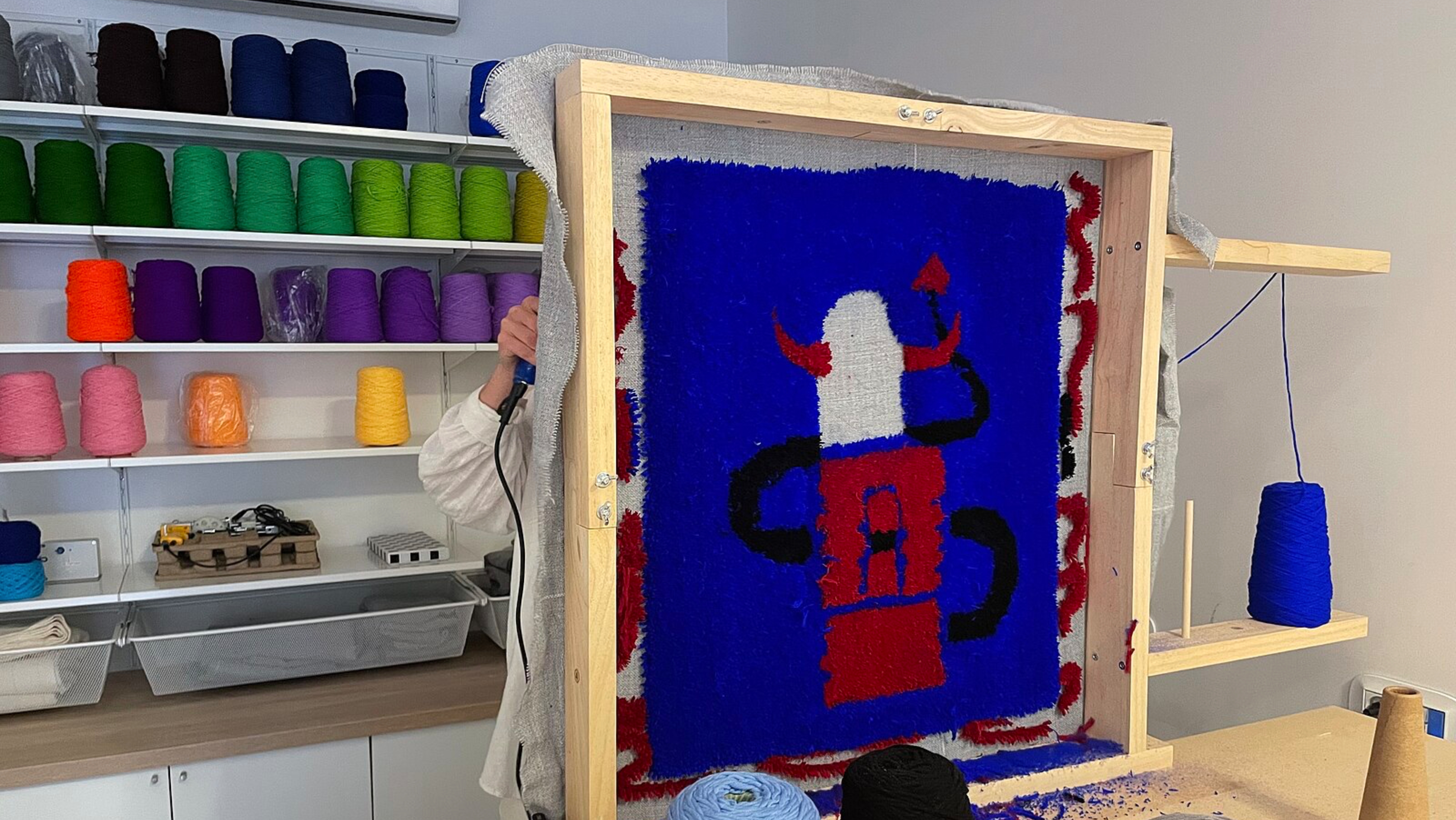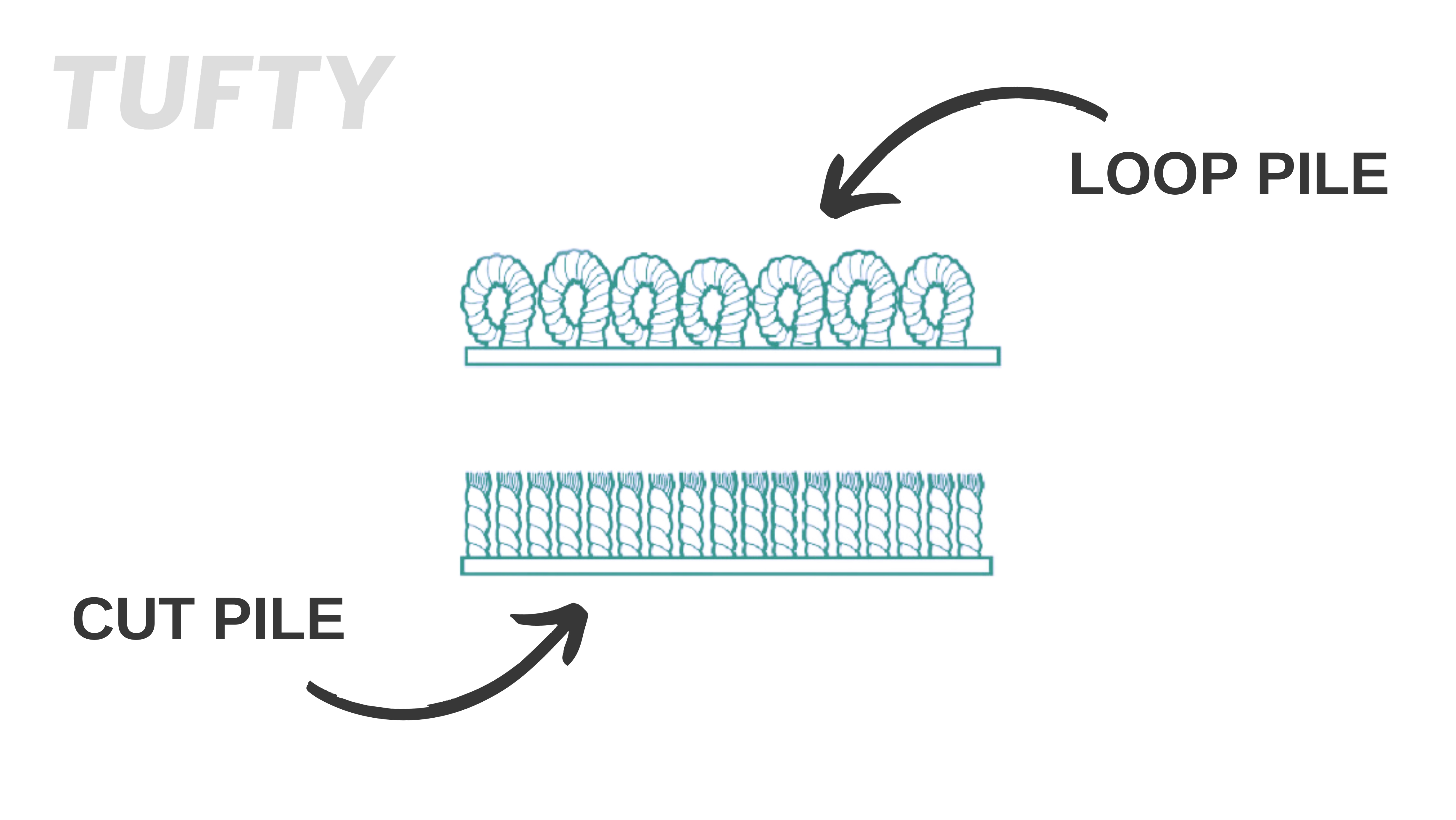We use cookies to ensure a comfortable browsing experience on our website and to continuously improve its features, performance, and usability through traffic analysis. Learn more.
(Updated: September 2025)
Are you choosing between cut pile and loop pile for your next tufted rug or carpet? Wondering which one feels better, lasts longer, or works best with pets and high foot traffic? In this guide you’ll learn how each pile is made, how it performs, and when to choose one over the other. Keep reading to make a confident, shop-ready decision.

What is cut pile tufting?
Cut pile tufting gun is made by cutting the loops as you tuft, creating upright fibers with a velvety surface. It’s popular for graphic designs, carving, and 3D effects, and it delivers a cozy, luxurious feel underfoot.
What is loop pile tufting?
Loop pile leaves loops uncut, creating a springy, textured surface. It’s prized for durability, pattern stability, and a tidy look that hides tracking in busy areas.
What’s the difference between cut and loop pile?
- Construction: cut = loops cut at the tip; loop = loops intact.
- Look/feel: cut = smooth & plush; loop = textured & tailored.
- Wear behavior: loop resists crushing better; cut can show footprints sooner.
- Designs control: cut is best for carving & high/low sculpting; loop excels at crisp micro-textures.
1. Feel and appearance
Cut pile tends to feel softer and more luxurious underfoot, with a smooth, even look—ideal for bedrooms, lounges, and display pieces. Loop pile feels springy and textured, with visual patterning from the loops.
Loop pile doesn’t show vacuum or walk marks as much as cut pile, so it maintains a “just-made” look longer in busy zones.
2. Durability and traffic resistance
Because the fibers are unbroken, loop pile stands up better to wear and crushing in hallways, stairs, entryways, and other high-traffic areas. Cut pile prioritizes comfort and aesthetics, and while dense cuts can be durable, they generally show tracking sooner than loops.
3. Pets and claws
If you live with cats or dogs, consider how paws meet pile:
- Loop pile can snag on claws, potentially pulling loops and damaging the surface -especially with longer loops.
- Short-loop constructions can mitigate risk, but many pet owners find cut pile safer for claws and easier to keep tidy.
4. Cleaning and maintenance
- Cut pile: Vacuums easily, may show footprints and vacuum tracks on dense, velvety styles.
- Loop pile: Hides tracks better, use vacuum settings that won’t catch loops (avoid aggressive brush bars).
- For both: A higher stitch density and even tension during tufting will pay off in cleaner edges and longer wear.
5. Design control, carving, and texture
- Cut pile is ideal for carving, sculpting, and high/low shaving to create shadows and crisp graphic shapes.
- Loop pile excels at texture and pattern stability, keeping small motifs tidy over time.
- Mixing cut and loop in one rug gives built-in contrast (matte vs. plush) and can hide footprints and stains in strategic zones.
6. Pile height, density, and structure
- Height: Lower piles (both cut and loop) look sharper and tolerate traffic better; higher piles feel plusher but show movement.
- Density: More stitches per inch (SPI) = tighter surface, cleaner edges, and better wear.
- Backing & adhesive: Consistent adhesive coverage and proper curing prevent tufts from loosening in both pile types.
Quick comparison
|
Factor |
Cut pile |
Loop pile |
|
Underfoot feel |
Plush, velvety |
Textured, springy |
|
High-traffic resilience |
Good if dense; shows tracks sooner |
Excellent; resists crushing |
|
Pet considerations |
Fewer snags (no loops) |
Risk of snagging with long loops |
|
Design & carving |
Best for sculpting |
Best for fine texture |
|
Track/vacuum marks |
Shows more |
Hides better |
|
Cleaning feel |
Lux look; brush lines visible |
Looks tidy longer |

FAQs makers and buyers ask
Is cut pile softer than loop pile?
Generally yes, cut pile’s upright tufts feel smoother and plusher underfoot, while loops emphasize texture.
Which lasts longer in busy spaces?
Loop pile usually outperforms cut pile in wear resistance and resistance to crushing, making it a go-to for high-traffic areas.
Does loop pile show footprints and vacuum marks?
Less than cut pile. Loop textures minimize tracking, so surfaces look tidy longer.
Can I mix cut and loop in one rug?
Yes, many designers combine them for contrast, dimension, and strategic durability, and it can help mask footprints in key zones.
What should beginners start with?
Most newcomers start with a cut-pile gun or Tufty starter kits for its forgiving finish and broad style range, then explore loop or dual-action once they have control of speed and tension.
How to choose
Do you want to choose the right tufting gun? This easy guide will help you with that:
- You want luxurious feel for a bedroom or statement piece: choose cut pile.
- You need durability for stairs, entry, or studio floor: choose loop pile.
- You have pets with sharp claws: avoid long loops, prefer cut pile or short-loop textures.
- You love carved graphics and 3D effects: choose cut pile.
- You want subtle texture that hides daily wear: choose loop pile, consider mixing cut accents.
Conclusion
So, cut pile vs loop pile tufting what’s better? It depends on your priorities. Choose cut pile if you want plush comfort, sculpted details, and a high-end, velvety look. Choose loop pile if you value maximum durability, texture, and fewer visible footprints in high-traffic zones. For homes with pets, avoid long loops and consider cut pile or short-loopconstructions.
If you’re new to tufting, start with cut pile and add loop textures later or combine both in one piece for the best of each. With the right pile, height, and density, you’ll build a rug that looks great and performs the way you live.
